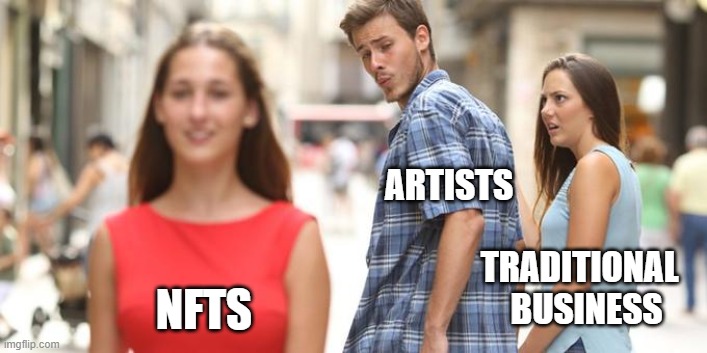“NFTs Are Entirely Worthless!”
That was the instant opinion of a gamer friend when the topic of NFTs came up. He hastened to embellish:
“They aren’t worth anything. What have you got when you buy an NFT? Nothing! You got nothing. Not even air! NFTs are just the latest scam in a long line of them.“
I didn’t pick up the gauntlet, as we had creatures to slay, but I thought this might be a good topic for a short blog post.
Let’s start with a definition. An NFT is a unique, digital certificate of ownership of a media asset (such as an image, a video, a track of music, or a word document) which is recorded in a permanent, non-hackable public ledger that anyone can read.
A simple example is a piece of art you buy, that becomes your undisputable copy. Can you resell it? Yes, at whatever price you can get for it. NFTs allow the artist to set a royalty percentage for secondary sales; any time that NFT is resold, the creator automatically gets a percentage of the sale.
There are a lot of implications to this definition, which may not be obvious. Let’s consider the lifecycle of a traditional piece of art, and compare it with how NFTs work.
Traditionally, an artist creates a painting on canvas, for example. It takes artistic skill to do so, and results in a unique physical work. If the artist wants to sell that piece, he or she tries to get a large audience of potential buyers by engaging a gallery or auction house to show it to as many people as possible. This audience comes at a cost; it is not unusual for a third party seller to claim a majority of the sale price for bringing that transaction to conclusion.
The art world is naturally concerned with authenticity, whether it is an original sale, or a later resale. There are whole industries dedicated to verifying artist creation.
Compare that with NFTs. The artist ‘mints’ (or creates) an art piece by encoding it into a smart contract. (Don’t worry, every NFT platform helps you do this.) That smart contract goes on a blockchain, which shows everyone who the creator is, who owns it, how much it sold for, etc. The artist controls when the art becomes available for sale, how much it sells for, what percentage of royalty it carries, and also if the art is a single copy, or multiple versions of it can be sold. The artist can choose to take it off the marketplace, or change the price, or offer it as a timed auction instead of a fixed price sale. The traditional art world has no such comparable openly transparent history of a given piece of art.
NFTs are synonymous with crypto. Using crypto such as ethereum, tezos, polygon, or other types of exchanges, allows the artist to transact with their buyer directly. The majority of the sale price goes right to the artist. No third party banker is involved.
For these, and other reasons, NFTs offer artists a level of control, compensation, and transparency that have been previously unheard of. As such, I find my NFT art to be of great value to me, and hopefully to my collectors as well.
If you’d like to see my work, check out my link list: https://linktr.ee/downbeatlounge

